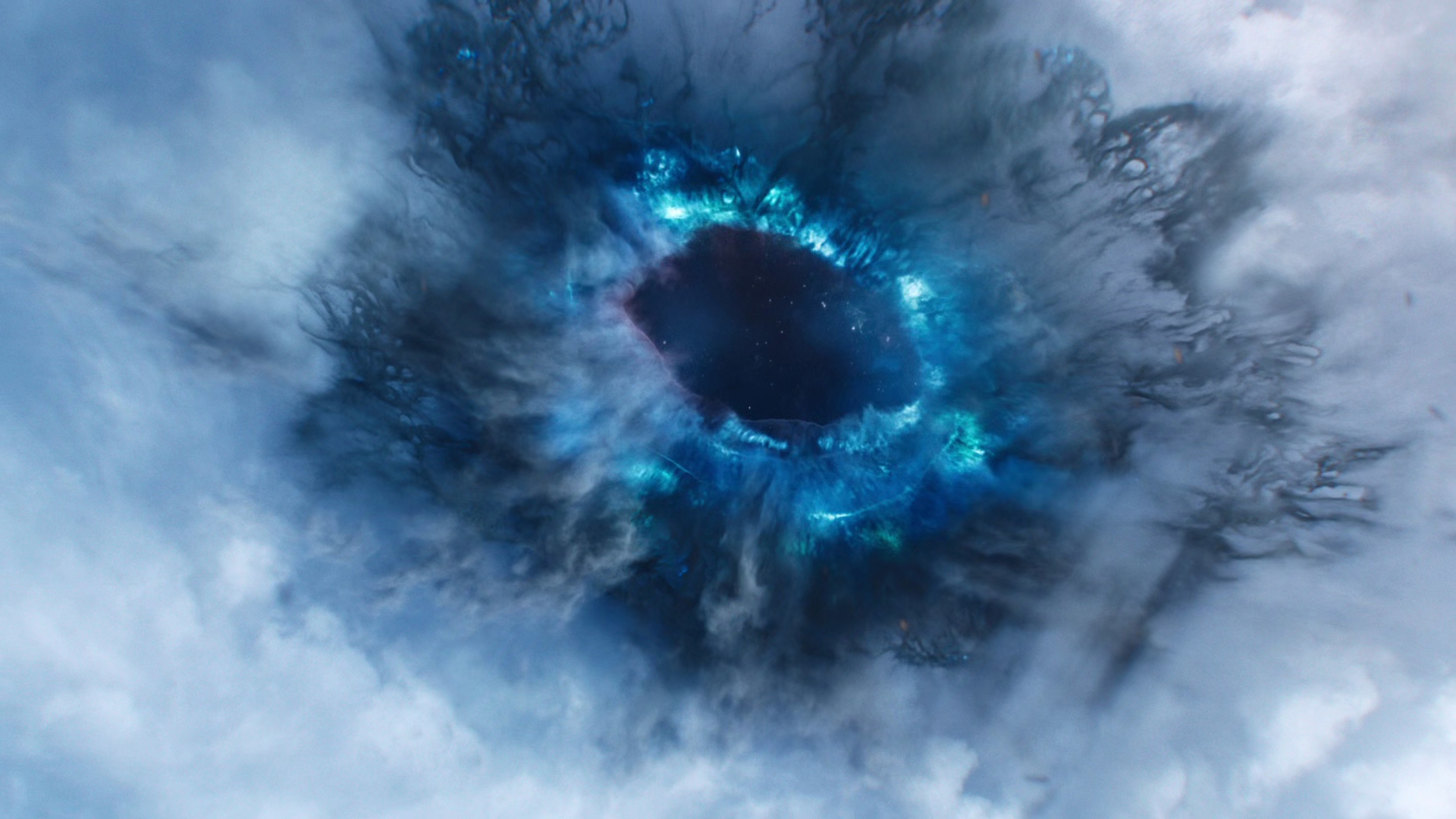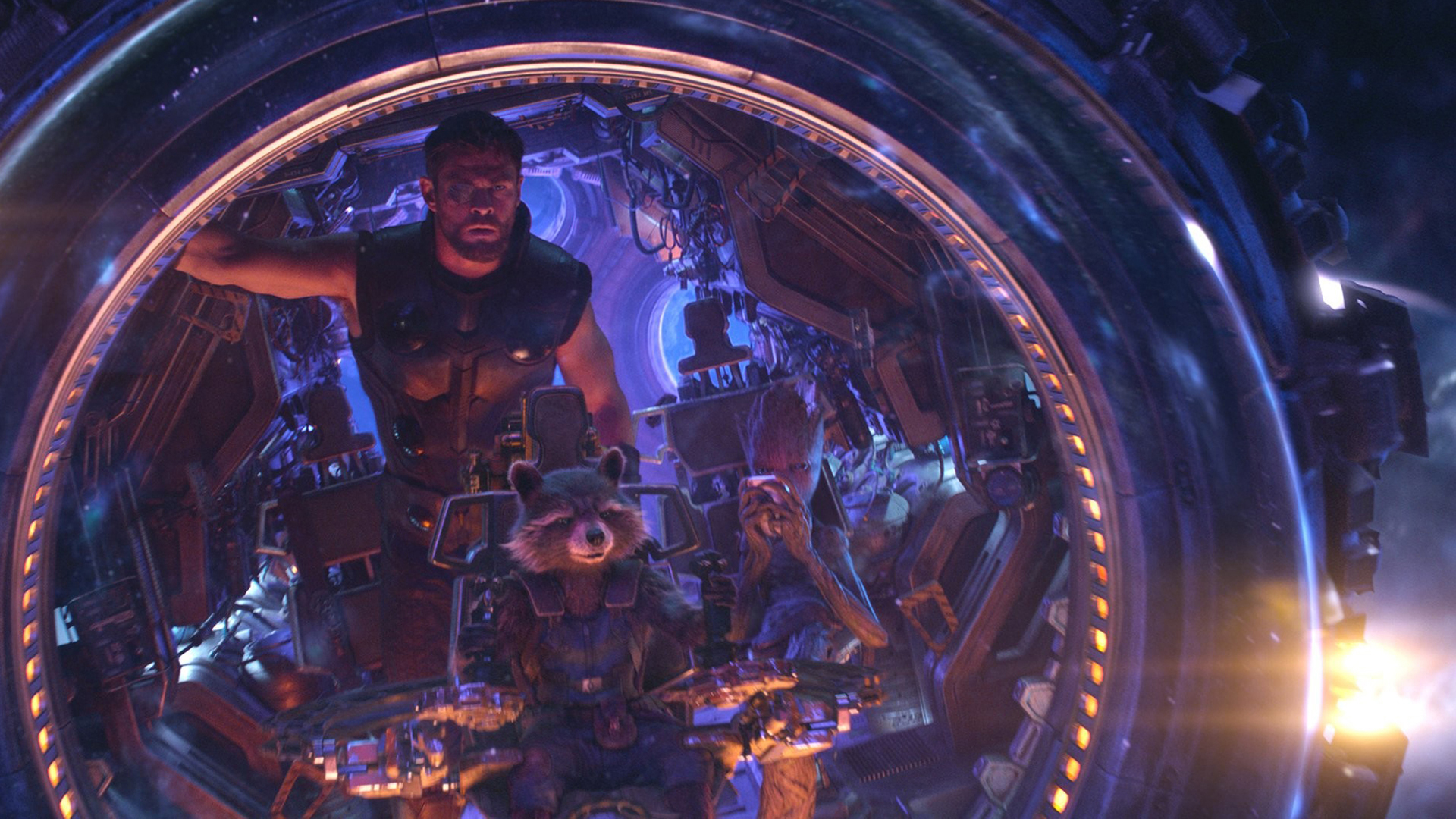Does space travel in the MCU make any sense?
Untangling all the different space travel methods to move across the Marvel universe.

As the Marvel Cinematic Universe keeps expanding in all directions, we often forget that space and magic in the films took a while to truly get off the ground. Phase 1 opened many doors with Thor and The Avengers, yet the lid didn’t come off until Phase 2. James Gunn’s Guardians of the Galaxy took fans to another galaxy, Andromeda, and made us question how Marvel’s take on space travel works.
Now we’re officially in the middle of Phase 4 – Multiverse is the new hot stuff, and heroes and villains have been bouncing around the universe like it’s nothing for years on the big screen (and now TV). While the Guardians films told us it’s all about wormholes of sorts, main Infinity Saga villain Thanos took an awful lot of time to get his armies to Earth. Was he just busy? Moreover, Captain Marvel doesn’t need ships at all because Tesseract magic. And we’re keeping Doctor Strange and the wizards out of this because they operate on a whole other level.
if you want to catch up on the MCU and aren't sure where to start, check out our guide to the Marvel movies in chronological order.
Disclaimer: we’re going to try to make the most sense out of comic book nonsense that simply aims to tell entertaining space-jumping, reality-bending stories. Going all Christopher Nolan on this universe only leads to frustration. However, universes born from pulpy entertainment, such as this one or Star Wars, often almost nail the science anyway.
Tearing holes in space-time is the easiest way

The MCU’s first ventures into outer space are kinda straightforward: Thor (2011) introduced audiences to the Nine Realms from Norse mythology, a set of planets scattered across different galaxies and connected thanks to the Tree of Yggdrasil. For Asgardians, the act of visiting these worlds depends on the Bifrost, Asgard’s Rainbow Bridge.
While Asgard is a highly fantastical setting and the Bifrost seems to draw energy from the center of Asgard itself, Jane Foster (Natalie Portman) describes the resulting phenomenon as a "wormhole" or "Einstein-Rosen bridge." Bifrost-powered travel is always depicted as near instantaneous, so that’s probably the best guess in town.
It also seems logical that the fancy cannon-shaped Bifrost building harnesses a massive amount of Asgard’s energy and literally pokes a hole through space-time, shooting folks away and speedily fixing the tear afterwards. Furthermore, the whole mission in the third act is to stop Loki from destroying Jötunheim with a continuous blast of energy from the Bifrost – this leads to Thor going "hammer time" on the bridge and cutting off Asgard’s connection with the other realms. Loki falls through the resulting (messy) wormhole, too.
Breaking space news, the latest updates on rocket launches, skywatching events and more!
The Avengers picked up right after the events of Thor, showing Loki return with "glorious purpose" thanks to some wild wi-fi manipulation across space through the Tesseract, one of the first Infinity Stones that appeared in the MCU. Almost the entire film is about stopping Loki from opening a bigger portal for Thanos’ armies, which are capable of space-travelling themselves, so this raises a major question: why did they need a wormhole at all?

As stated before, the Einstein-Rosen bridges are all about creating shortcuts for long journeys across the universe. At this point, we hadn’t been exposed to the truly sci-fi side of the MCU yet, so Joss Whedon and everyone involved probably didn’t think too hard about the Chitauri and their ships – a massive portal above New York was a great threat with lots of possibilities for the film’s third act. That’s all that mattered.
Thor also returns to Earth under Odin and Frigga’s orders, who both used "dark magic" to learn about Loki’s whereabouts and "cheat" transport to Earth while the Bifrost was being repaired. The dark magic trick comes up again in Infinity War when Heimdall conjures some remaining energy before being offed to send the Hulk to Earth (the Bifrost was destroyed forever in 2017’s Thor: Ragnarok). This magic appears to be a variation of sorts of what the Bifrost works with, a hidden energy which is likely unstable and only used in emergencies by those able to manipulate it. Thankfully, Thor receives the Stormbreaker later because plot and can now create rainbow bridges himself. Rad.
Guardians of the Galaxy, which takes place in the Andromeda galaxy according to James Gunn, marked Thanos’ first major appearance; we see he’s got quite a few allies who are perfectly capable of regular space travel. Infinity War then doubles down on the "typical alien invasion" angle, with Thanos finally taking the fight himself to Earth and other worlds that housed the Infinity Stones. So at least Thanos’ main force didn’t need a wormhole at all, and the only reasonable in-universe explanation for the whole portal ordeal in Whedon’s Avengers is that they wanted to catch Earth’s defenses off-guard and not approach them from outer space. After all, the Other tells Thanos they maybe underestimated Earth and its heroes in the post-credits stinger, so it seems like they didn’t have a lot of inside info about the current state of the planet ahead of that first invasion for some reason.
Space travel is all over the place due to the stories' needs

Yeah, the science and space-related plot points in these stories are all about what the narrative needs, about creating tension and stakes. If the script wants things to move slowly, we’ll spend more time with our heroes and villains jumping through space. If the film needs an immediate threat, just throw a portal in there and get things going. That being said, we’re not done with this exploration yet.
So Thanos’ army didn’t need a big wormhole after all, but that doesn’t mean “regular” space travel in the MCU works differently. James Gunn’s Guardians films did most of the heavy lifting when it came to these matters. Mind you, most of the small nuggets of info weren’t too explicit, and the first installment doesn’t show us how space travel across the galaxy works at all (yay ellipses), but it appears that Gunn heard those questions loud and clear, because Vol. 2 deals directly with how the ships zap across Andromeda.
Apparently, space-exploring civilizations built a highway of sorts which even connect different galaxies, with marked “jump points” that make travelling huge distances relatively easy as long as you stick to the “road” and follow the recommendations – one of the film’s most hilarious scenes depicts the consequences of jumping too much too fast. Little more is said about the process, but the visuals support the idea these jump points are wormhole-based as well. They are more science-y (we might be able to replicate them at some point) and definitely aren’t as fast as Asgard’s magic-powered roads, or Doctor Strange and the wizards’ literal doorways, but they get the job done.

Somehow, there’s an even cooler way to travel through Marvel Studios’ universe: simply speeding insanely fast and going all Star Wars with the help of the Tesseract’s mysterious energy. As seen in the Thor’s post-credits scene and the beginning of The Avengers, SHIELD kept the Tesseract (the Space Stone) locked away since Red Skull toyed with it and disappeared, but of course they toyed with it themselves. The US Air Force, SHIELD, and NASA jointly put together Project PEGASUS in order to develop a light-speed engine powered by the Tesseract.
Kree scientist Mar-Vell (disguised, of course) was part of the project and worked on it because it could be the Skrulls’ way to exit the ongoing Kree-Skrull war and find a new home outside the charted "galactic highway" we previously talked about. Due to the Kree’s intervention, Carol Danvers, a pilot alongside Mar-Vell, absorbed the engine’s energy and gained superhuman abilities (like a ton of them).
Once Carol taps into her dormant powers later in that film, she becomes the Captain Marvel we all know from the comics, and the craziest thing is that she can zap through space at light-speed, allowing her to watch over faraway worlds outside the "space roads system." This is how she helps the Skrulls find a new home.
While Captain Marvel doesn’t need external help to move across the vastness of space, it seems like it takes her some time to get places despite going above light-speed (wormholes rock), and that’s the perfect excuse to have her miss some of the Avengers’ biggest battles – she could deactivate most threats way too fast, as Endgame showed us.
Finally, it’s also interesting to consider why she doesn’t seem to age at all, and it probably has to do (at least partly) with Einstein’s theory of relativity, which claims that time is relative, moving "differently for objects in motion than for objects at rest," although this would have more complicated implications for both her and other space-faring MCU characters.
Fran Ruiz is our resident Star Wars guy. His hunger for movies and TV series is only matched by his love for video games. He got a BA of English Studies, focusing on English Literature, from the University of Malaga, in Spain, as well as a Master's Degree in English Studies, Multilingual and Intercultural Communication. On top of writing features and other longform articles for Space.com since 2021, he is a frequent collaborator of VG247 and other gaming sites. He also serves as associate editor over at Star Wars News Net and its sister site, Movie News Net.

